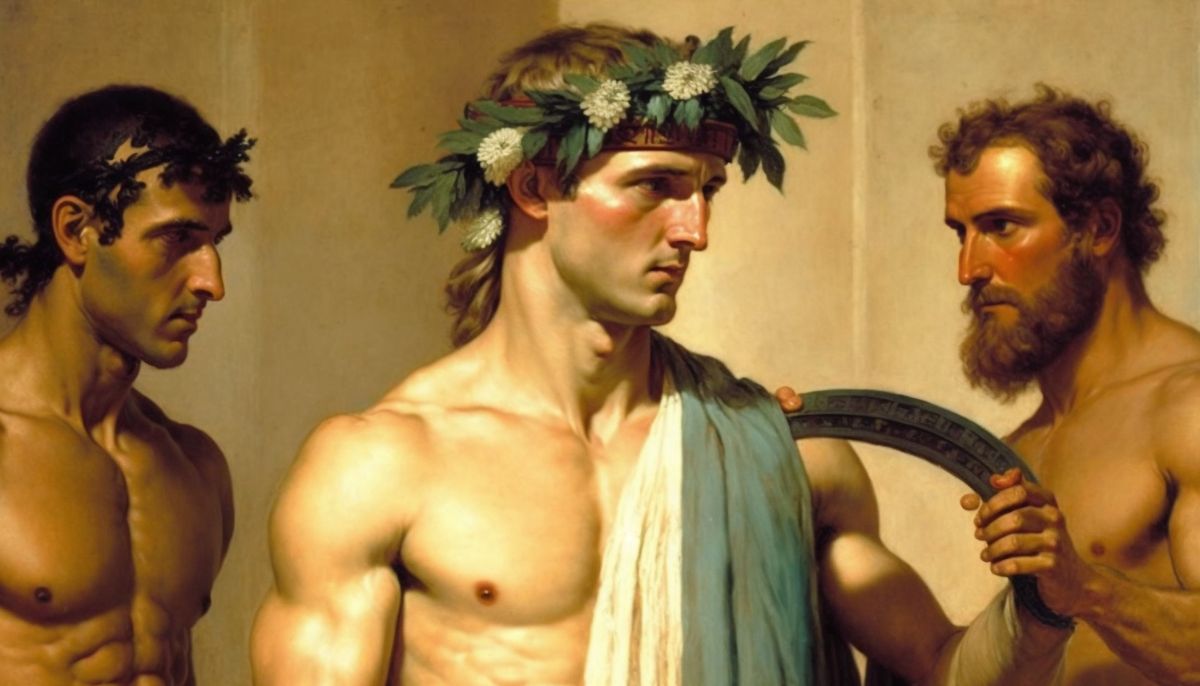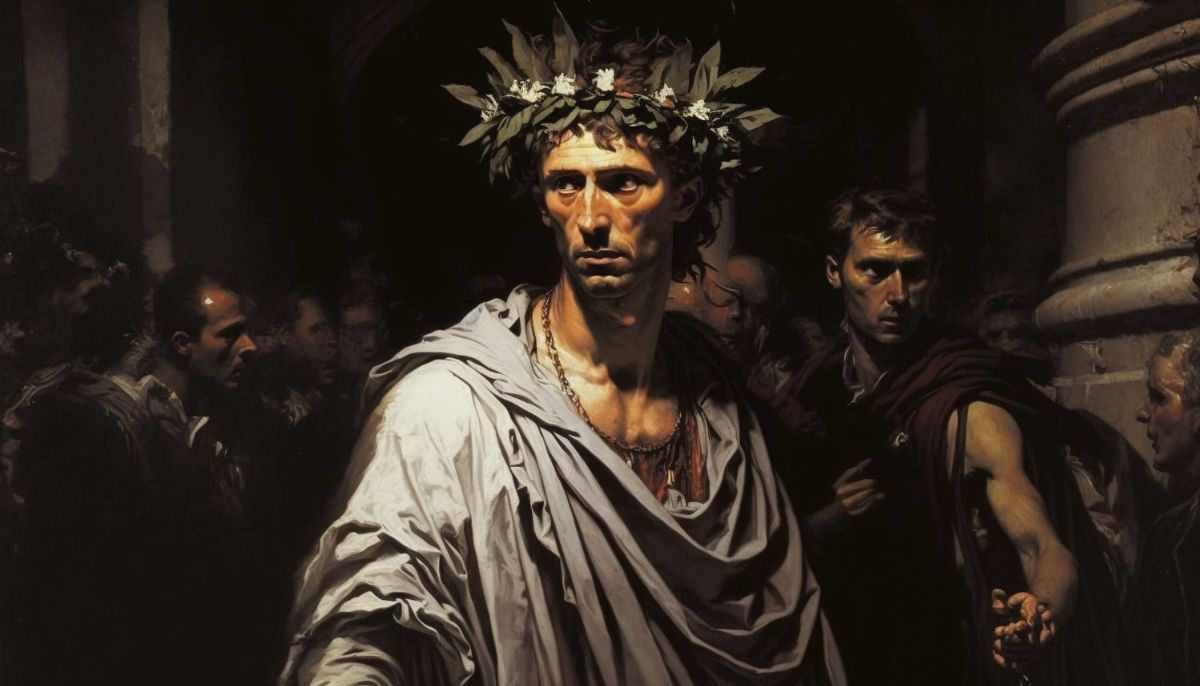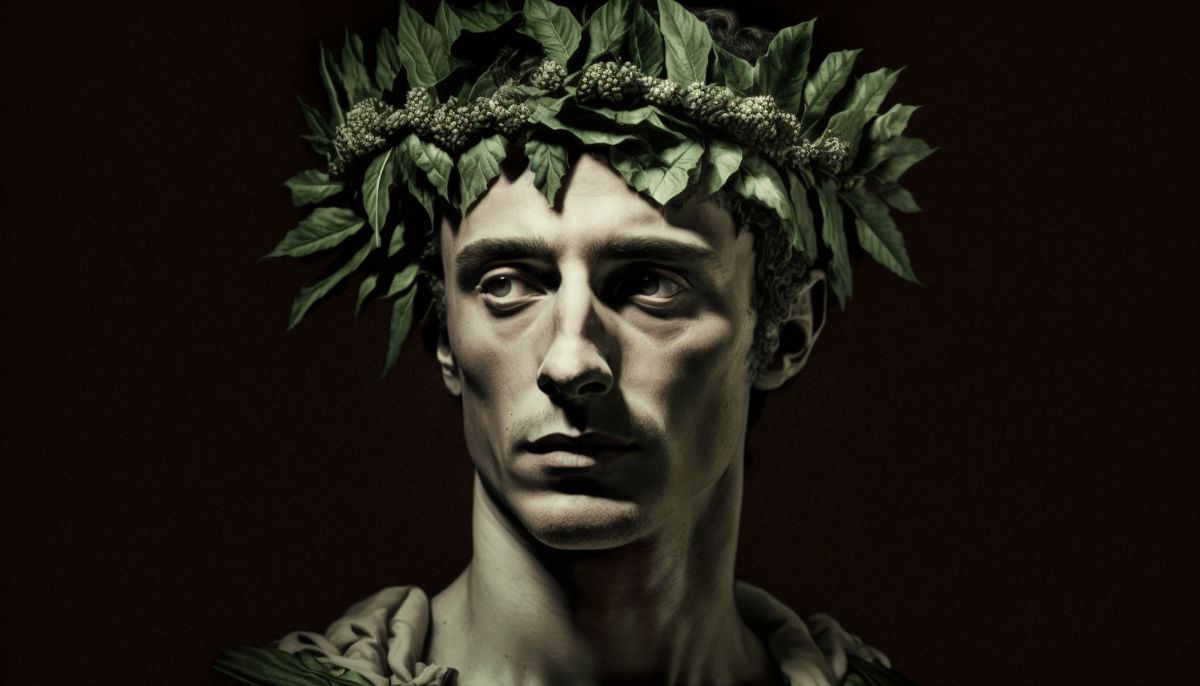With its simple yet elegant design, the laurel wreath has symbolized victory, honor, and achievement for thousands of years.
From ancient Greece to modern times, it has been used to crown the heads of great leaders, athletes, and artists.
This article explores the rich history and symbolism behind the laurel wreath, from its origins in Greek mythology to its use by Caesar and beyond.
Join us on a journey through time to discover the enduring power of this iconic symbol.
Laurel wreath in Greek history
Athletes, scholars, and artists often wore wreaths as a mark of honor and recognition for their achievements.
The tradition of using the laurel wreath as a symbol of victory and glory continued to spread throughout ancient Greece.
Over time, the laurel wreath became an enduring symbol of excellence and success, and its use in various ancient Greek and Roman myths has helped to solidify its place in history.
Association with Apollo
The significance of the laurel wreath in ancient Greece dates back to the time of Apollo, the god of music, healing, and prophecy.
The laurel tree, also known as Laurus nobilis, was considered sacred to Apollo, and its leaves were used to create wreaths that symbolized victory and accomplishment.
Pythian games

The Pythian Games, held every four years in ancient Greece, were one of the most prestigious athletic competitions of their time.
Athletes from all over Greece would gather to compete in various events, including foot races, wrestling, and chariot races. The winners of these events were awarded a highly coveted prize – a laurel wreath.
The significance of the laurel wreath at the Pythian Games went beyond mere recognition of athletic ability. It also symbolized the athlete’s connection to the gods.
As the patron god of the Games, Apollo was closely associated with the laurel tree and the wreath made from its leaves. By receiving a laurel wreath, the winning athlete was seen as being blessed by Apollo himself.
Roman history: Laurel wreath symbolism
For the Romans, symbolism was an integral part of their societal fabric, used to convey messages of power, status, and achievement.
The Romans were known for their extensive borrowing of Greek culture, and the laurel wreath was no exception. Like the Greeks, the Romans also saw the laurel tree as a symbol of victory and honor. However, the Romans also added their twist to the wreath’s symbolism.
In addition to symbolizing victory, the laurel wreath was also used to decorate funerals in Roman times. The wreath was often placed on the head of the deceased as a way of honoring their accomplishments in life. Using the wreath in this context helped emphasize its significance as a symbol of achievement and success, even beyond athletics.
The Romans also associated the laurel wreath with their gods, particularly Jupiter. In Roman mythology, Jupiter was the king of the gods and the patron of victory.
By adopting the laurel wreath from the Greeks, the Romans could incorporate these powerful symbols into their own culture and create a unique meaning for the wreath.
Did Julius Caesar wear a laurel wreath?

Julius Caesar, one of the most famous figures in Roman history, was known for his many accomplishments as a military leader and a politician. Among the honors he received during his lifetime was the Civic Crown, a prestigious oak leaf award considered the second-highest honor in the Roman Republic.
The Civic Crown was given to individuals who had saved the lives of Roman citizens in battle. It was seen as a symbol of the recipient’s bravery and devotion to the state.
Julius Caesar was awarded the Civic Crown for his service in the Siege of Mytilene in 81 BC.
Wearing the Civic Crown was considered a great honor and reserved only for those who had truly distinguished themselves in service to the state.
For Caesar receiving the Civic Crown was one of his greatest achievements.
Laurel Wreath in Modern History
Laurel wreaths have transcended time as a symbol of triumph and excellence. Modern-day usage includes the Olympics, in academic ceremonies, and as a representation of the highest honor at the Nobel Prize ceremonies.
Olympic medals
The use of laurel wreaths continues to be a significant tradition in modern times, particularly at the Olympic Games. Since the ancient Olympics, winners of each event have been awarded a wreath made of olive leaves, symbolizing victory and peace.
The tradition of awarding olive wreaths at the Olympics was revived during the first modern Olympic Games in 1896 and has continued to this day.
Master’s degrees
Master’s Degrees In some academic institutions, graduates receiving a master’s degree are awarded a laurel wreath during graduation. This tradition dates back to the Middle Ages when laurel wreaths were given to scholars who excelled in their studies.
Today, some European universities still observe the tradition of awarding laurel wreaths. The wreaths represent the graduates’ academic excellence and hard work; they proudly wear them during the graduation ceremony.
Nobel laureate
One of the most notable uses of laurel wreaths in modern times is in the Nobel Prize ceremonies.
The laurel wreath is a fitting symbol for the laureates, as the word “laureate” is derived from the Latin “laureatus,” which means “crowned with a wreath of laurel leaves.“
Throughout history, the laurel wreath has symbolized victory, excellence, and achievement. From ancient Greece and Rome to the modern-day Olympics and Nobel Prize ceremonies, it has remained a powerful symbol of human accomplishment.
The laurel wreath reminds us of the importance of striving for excellence and achieving great things, and its legacy will continue to inspire future generations.






